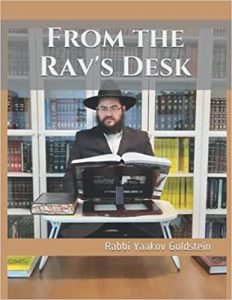
*As an Amazon Associate I earn from qualifying purchases.
- Question:
I don’t want to sound like I’m complaining, but Sunday’s and Mondays Chumash is very long and exhausting. After looking at the rest of the Parsha, I see that in these first two Aliyos we read more than half of the Parsha [91 Pesukim out of 139]. Why is it set up this way and why didn’t they make it more proportionate so that each day receives a similar number of verses? A bit of mercy on the Chitas learners!
Answer:
The distribution of the verses in the first and second Aliyah of Ki Sisa is an age-old custom of many communities, and is based on the idea that we do not want a non-Levi to read from the portion discussing the sin of the golden calf which his ancestors were guilty of worshipping. The tribe of Levi was the only tribe who did not sin with the golden calf, and it is hence most appropriate for them to read it rather than make someone who belongs to a different tribe which participated in the sin of the golden calf, read about his tribe’s sin. For this reason, we read an extraordinary number of verses in the first Aliyah of Kohen, up until the portion of the golden calf, in order so the entire portion discussing the golden calf can be read as Levi. Now, the reason that the Kohen does not read it, some say is because Aaron himself participated in the sin and was the one who built the golden calf to begin with.
Sources: See M”A 428:8 in name of Kneses Hagedola “Also, the custom is to call a Levi for the reading of the Eigel.”; Machatzis Hashekel ibid that the reason for this is because the Levi did not sin with the golden calf; Beir Heiytiv 428:7; Sefer Chaim 9:23; Kaf Hachaim 428:37; See also M”A 138:4; Noheig Katzon Yosef Ki Sisa, which is evident unlike the custom in M”A, as the Shelishi would read Parshas Haeigel; Imrei Halacha p. 233

 Donate
Donate
Leave A Comment?
You must be logged in to post a comment.